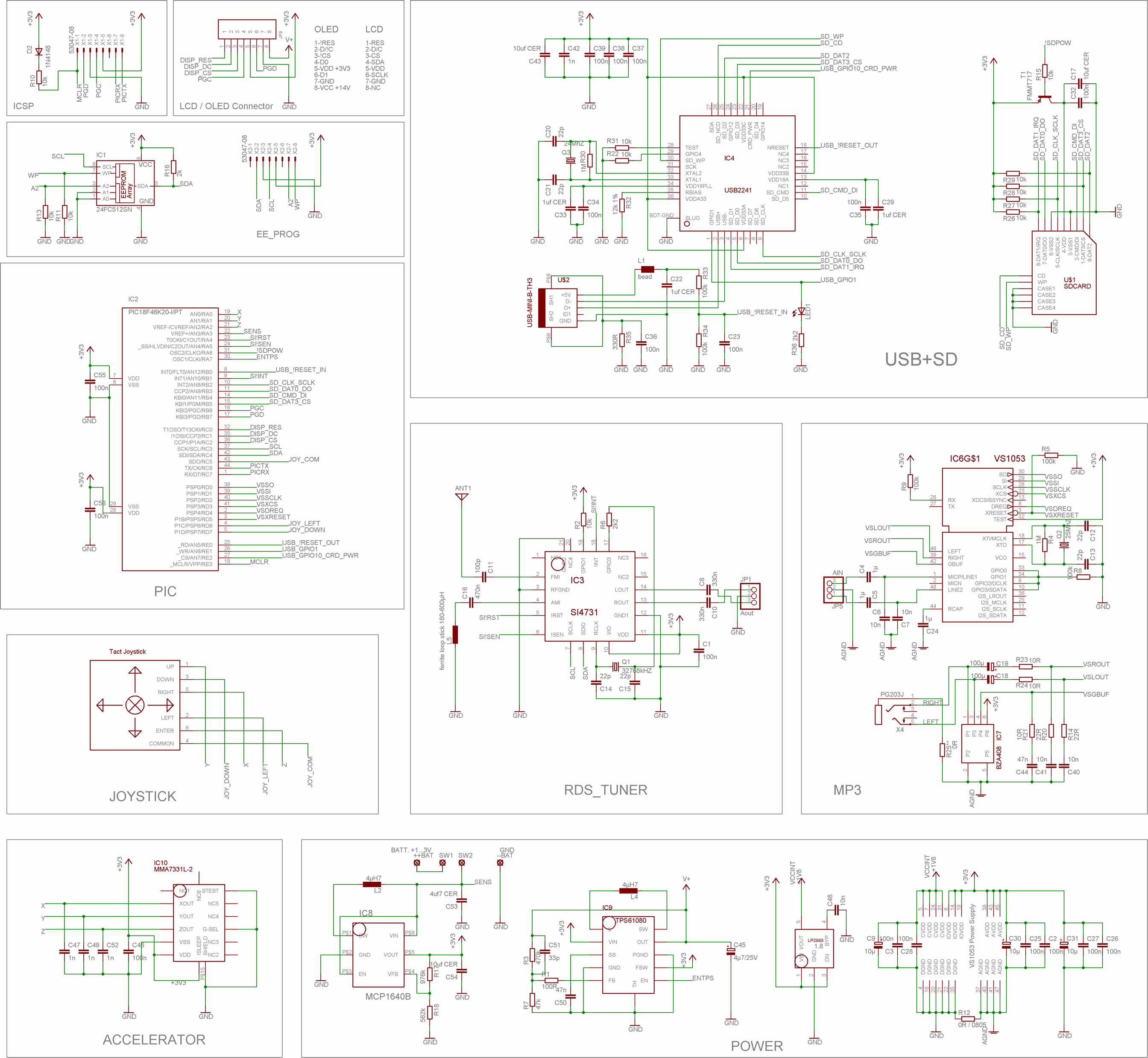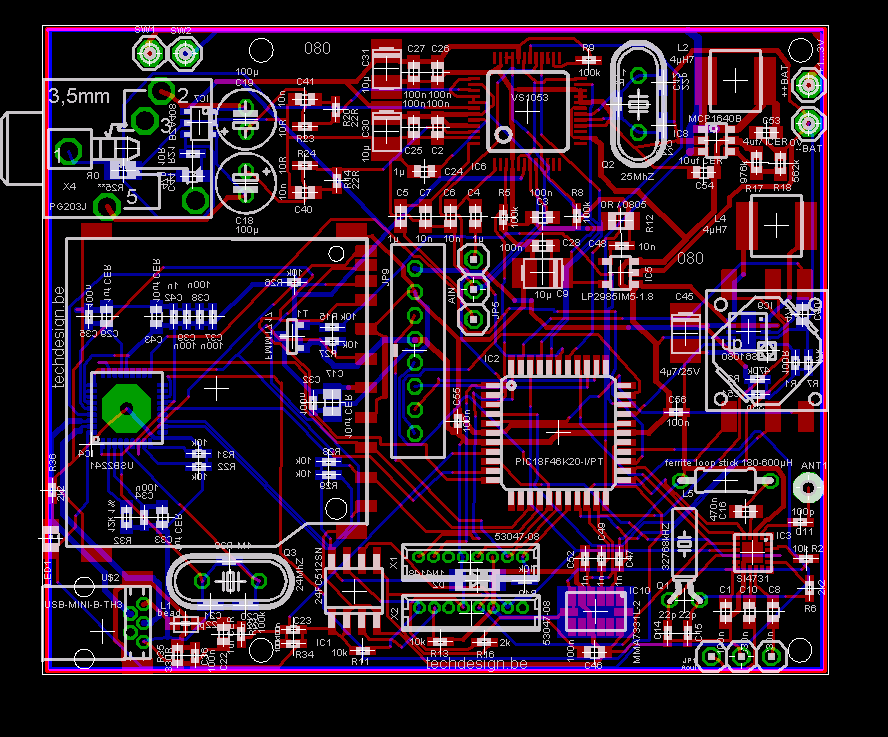KIT2 with OLED module playing an mp3 file.
The EchoMp3 is a small DIY* Audio player.
- Mp3, Wav, Ogg-Vorbis, Wma and Mid formats are supported.
- 4, 8, 16 GB SDHC cards used as storage.
- FAT (FAT16) and FAT32 supported.
- Low power operation with two AA (HR6) 1V2 Ni-Mh batteries.
- Power input range is +2.4V ... +3.0V
- Runs on a PIC18F46K20 at 64 MhZ.
- Up to 320 kBps bitrate CBR and VBR at 44,1 kHz supported.
- ID3 v2.3 tags supported.
- Full user control (volume, track, pause, skip, directory) with a 5-way micro joystick.
- Optional OLED Module 1 with RGB OLED 96x64 pixels.
- Real time display of bitrate, sampling rate, elapsed time, songnumber, ...
- Directory scrolling and file fragmentation support. Directory depth up to 10 accepted.
- SDHC (High Capacity) Cards now standard. Here are some compatible cards.
- Serial interface control so the player may be used as a playback module.
- High quality stereo DAC with a S/N ratio of typ. 94dB.
- THD of max. 0.07%
- Sounds way much better than
an iPod or Smartphone!
- Voice Recording in OGG Vorbis-format will be added later.
- Assembled and fully tested KIT2 and KIT3 now available.
- Project source code can be purchased separately.
- Fitting box for easy DIY.
- KIT1 DIY step-by-step construction guide: now available.
* Do It Yourself.
Schematic & pcb (Eagle 4.11e), hex file available. Player Software Updated on February 12, 2011.

